Vietnam’s tropical climate is ideal for growing all sorts of delicious and exotic fruits. So, when you visit Vietnam, trying Vietnamese fruits is as important as enjoying a bowl of pho.
So, are you ready to immerse yourself in tropical fruit paradise? Let’s go!
15 Exotic Vietnamese Fruits You Must Try
If you want to enjoy cheap, fresh and delicious fruits, why not come to Vietnam? Below are famous and super delicious Vietnamese fruits that you cannot miss, they will definitely be the main reason why you are fascinated by this S-shaped country.
Xoai (Mango)
Mangoes are a must-try fruit in Vietnam. They are sweet, juicy and full of flavour. In Vietnam, people enjoy eating green mangoes as a snack with salt and chilli or sliced into sour mango salad.
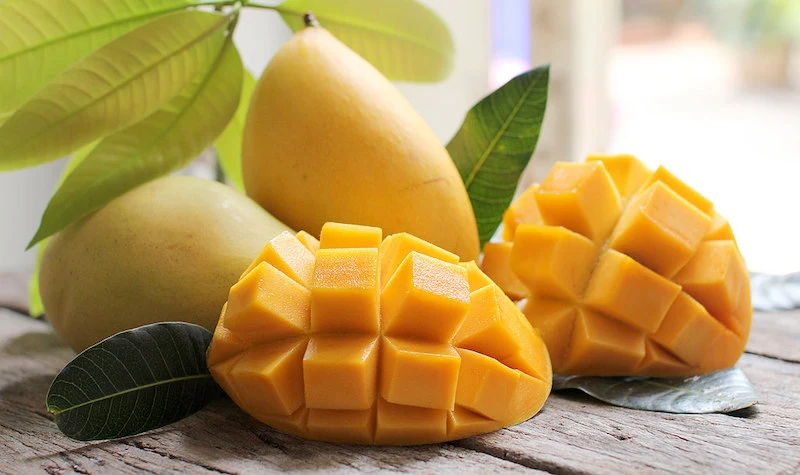
How to eat: Use a knife to cut around the seed and gently separate the two halves. Another way is to cut around the seed, cut diagonally into the flesh and bend the skin to pop out the mango pieces. You can eat these Vietnamese fruits with the skin on or off, depending on your taste.
Mang Cut (Mangosteen)
Mangosteen is one of the most favorite fruits of Vietnam and you can only find it from April to July.
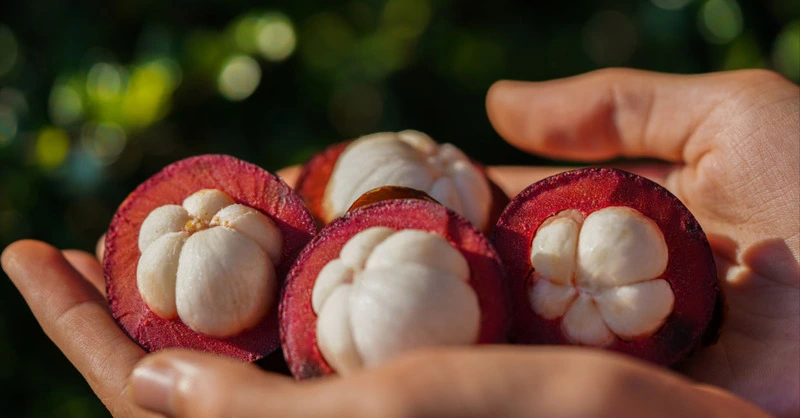
Thise Vietnamese fruit has a thick purple skin, the flesh inside is divided into segments, some with seeds and some without. It is soft, juicy, both sweet and slightly sour. It is very appealing to the taste buds, you will eat the whole bag without knowing it.
How to eat: You just need a thick skin with a knife, take out the flesh and enjoy. Don’t forget to remove the seeds when eating.
Mit (Jackfruit)
Jackfruit is one of the most popular fruits in Vietnam. It is very large, up to 90 cm long and weighs 10–20 kg. You will find it at fruit stalls because its green or yellow skin is covered with small, sharp, pointed thorns.
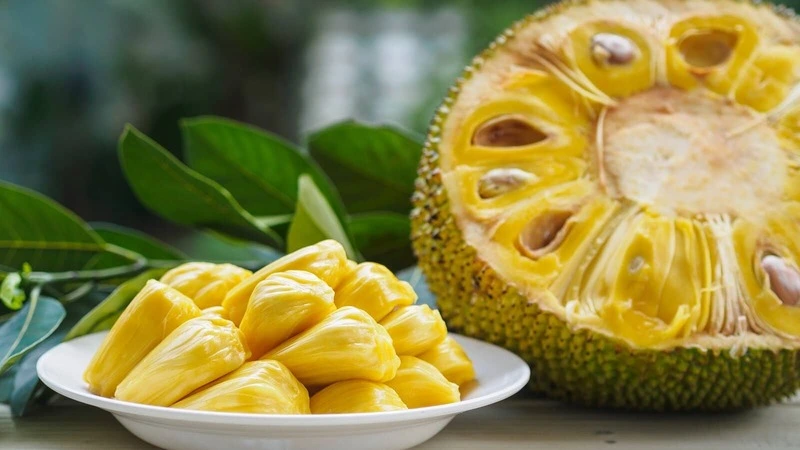
Inside, you will find a lot of sweet, yellow tubers that are pleasantly fragrant and crunchy, chewy. Jackfruit is also rich in vitamin C and other nutrients that are very good for your health.
How to eat: With its tough skin, many sharp thorns, and sticky sap, you should wear gloves or a towel to make it easier to open. Once you get the fruit out, you can enjoy it in many ways: mix it with yogurt, coconut cream, or other fruits for a super delicious dessert.
Sau Rieng (Durian)
Durian is known as the “King of Fruits” in Vietnam and other Southeast Asian countries. It is famous for its strong aroma and unique flavor, which can be unpleasant at first.
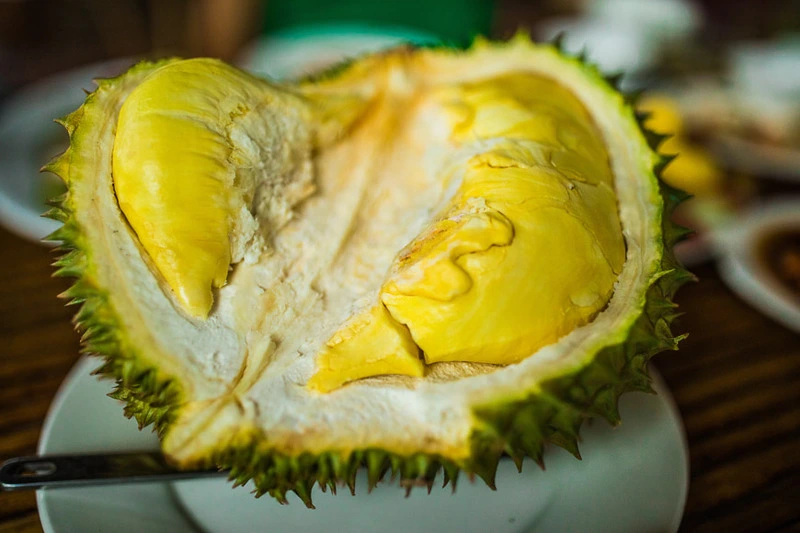
This fruit looks a bit like jackfruit but has sharper, larger thorns and can be painful if you are not careful. Inside the thick and hard shell is a soft, yellow, sweet, and fatty flesh that melts in your mouth. The flavor is extremely impressive and mouth-watering, and cannot be mistaken for any other Vietnamese fruit.
How to eat: Wear gloves and use a sharp knife to cut the shell. Then, scoop out the yellow flesh and enjoy.
Chom Chom (Rambutan)
Rambutan is a must-try fruit when you visit Vietnam. Its name comes from the Malay word “Rambut,” which means “hair.” Do you know why? The fruit has a shiny, hairy skin that doesn’t look very appealing.
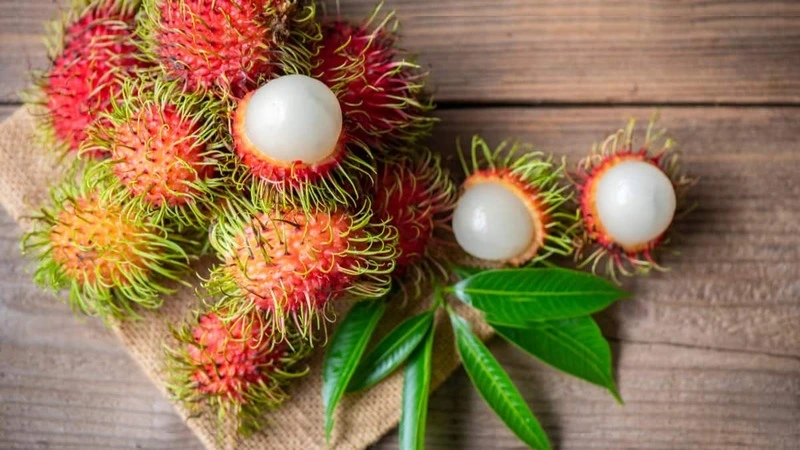
In contrast to the skin, the inside is soft, white, sweet, and slightly sour. It’s so appetizing that it will leave you wanting more. In the summer, you’ll see large bunches of rambutans at food stalls and street vendors everywhere.
How to eat: You can use a knife or your hands to peel off the skin, then enjoy the juicy flesh and remove the seeds.
Vai (Lychee)
Hai Duong and Bac Giang provinces are famous for growing the best lychees in Vietnam, and are even exported to many countries.
Lychees have round, rough, red or pink-red skin. Inside, you will find thick, juicy flesh surrounding a hard brown seed (inedible). The flavor is a combination of strawberry and watermelon, sweet, refreshing and juicy. That is why this is a favorite fruit in Vietnam in the summer.
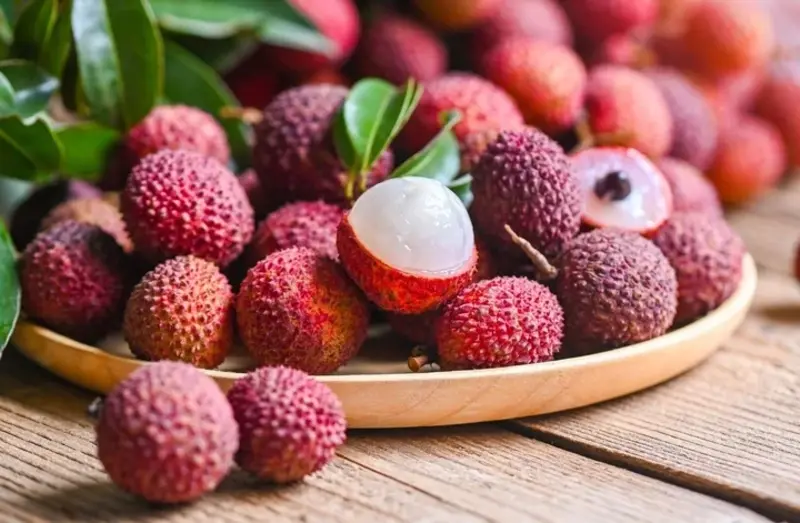
These Vietnamese fruits are rich in vitamin C, antioxidants and fiber, which help boost your immune system and may even prevent cancer.
How to eat: Just peel, remove the seeds and enjoy the flesh inside.
Nhan (Longan)
Longan is grown in provinces such as Hung Yen, Can Tho and Vinh Long. It is also popular in many tropical countries.
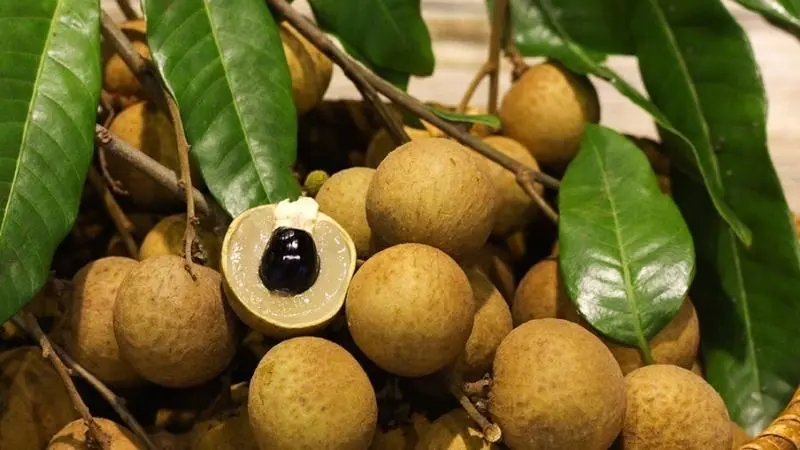
This fruit is called “dragon eye” in Vietnamese because its round black seed looks like an eye, surrounded by a white, sweet, and juicy flesh. Longan is not only delicious but also contains many nutrients such as vitamins, protein and calcium.
How to eat: You just need to peel off the thin, smooth brown skin on the outside and enjoy the juicy flesh inside.
Thanh Long (Dragon Fruit)
Dragon fruit is grown most in the Mekong Delta of Vietnam. It gets its name from its bright red skin with green scales that resemble a dragon’s skin. Inside, the fruit has white or red flesh filled with tiny black seeds that you can eat.
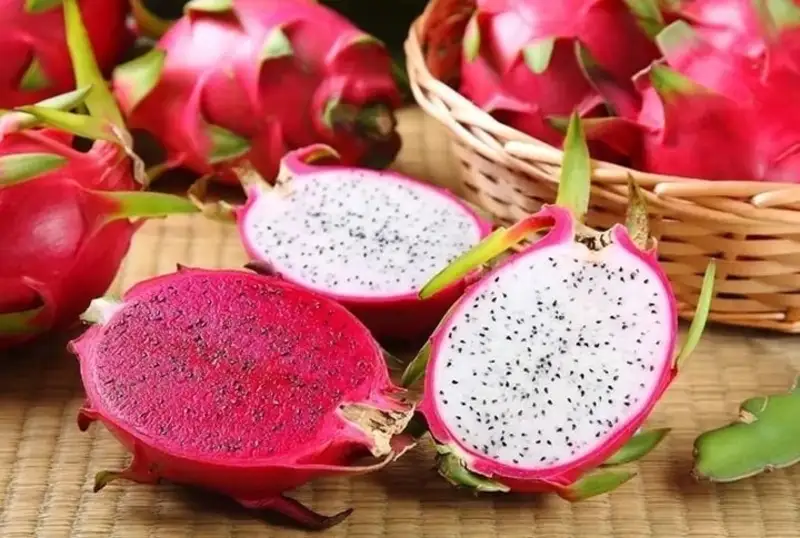
This Vietnamese fruit has a refreshing taste, with the perfect combination of mild sweetness and sourness. It is also very healthy, low in calories but high in fiber, magnesium, and vitamin C. It is great for your body and can even help prevent things like cancer and premature aging.
How to eat: Simply slice the fruit into smaller pieces, peel off the thin skin, and enjoy the soft, juicy flesh inside.
Vu Sua (Star Apple)
Star apple, also known as milk fruit, is a juicy and sweet fruit grown in the Mekong Delta of Vietnam. This Vietnamese fruit is about the size of an orange, with a thin, shiny skin that is light green or purple. Inside, you will find soft, white flesh with star-shaped patterns and large seeds that you cannot eat. The taste is sweet, creamy and extremely fresh!
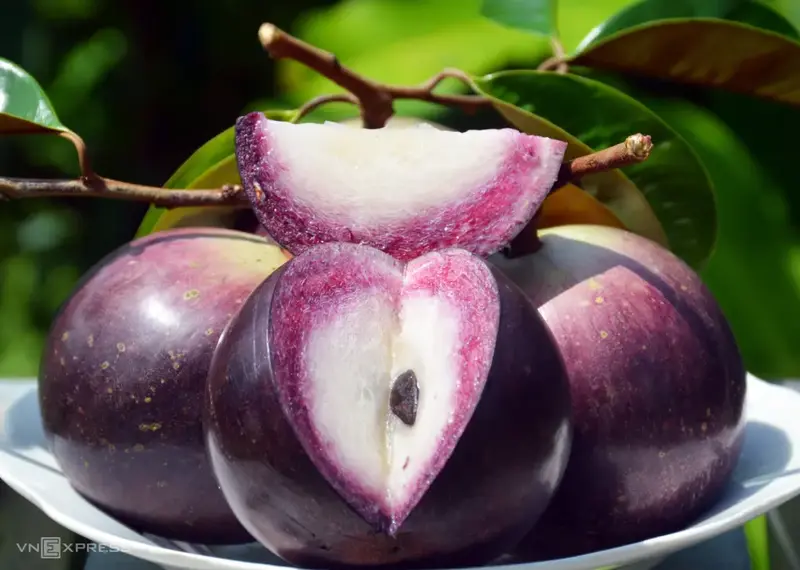
Star apple is also very good for your health. It is rich in vitamins A, C and B, as well as calcium, you can eat it every day.
How to eat: You just need to cut the fruit in half and use a spoon to scoop out the flesh to enjoy.
Hong Xiem (Sapodilla)
Sapodilla is a delicious fruit that is hard to find in Western countries but is very popular in Vietnam, especially in the North. It is egg-shaped and has a thin brown skin.
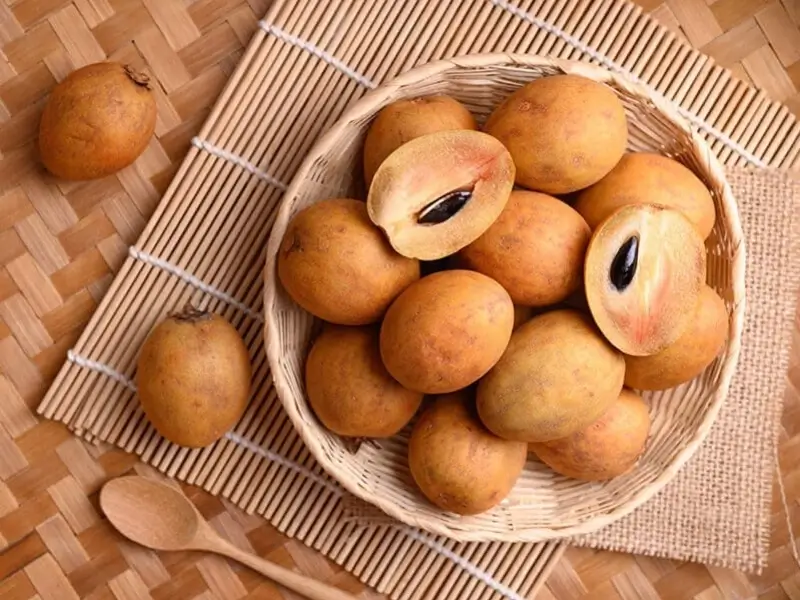
At first glance, this Vietnamese fruit may not look appealing, but inside it is soft, sweet and extremely delicious. You just need to make sure it is ripe before eating, if the sapodilla is not ripe it will be very hard and have latex, not delicious.
How to eat: You need to wash the fruit to remove dirt, peel and cut into bite-sized pieces, 4-6 pieces is ok.
Mang Cau (Soursop)
Soursop is a delicious and fragrant fruit that is loved by both Vietnamese locals and tourists. It has an oval shape and a dark green skin.
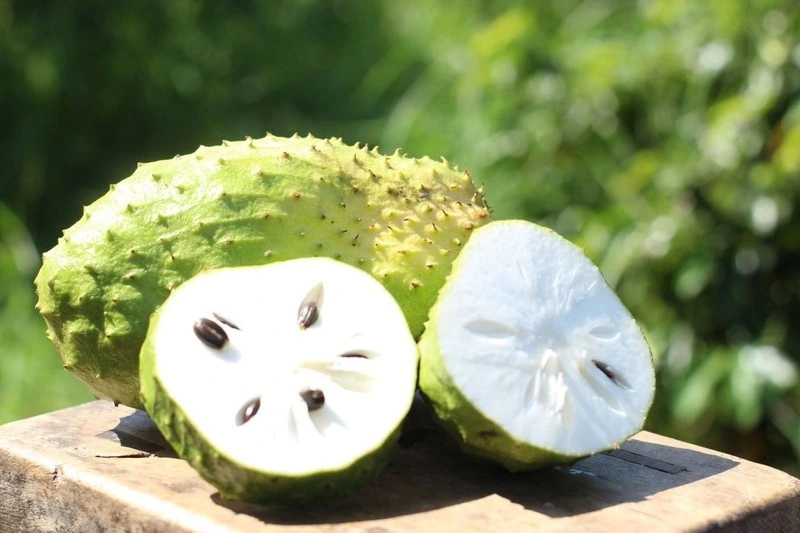
Inside, the white flesh smells a bit like pineapple and has a sweet and sour taste. It is often used to make smoothies, ice cream or juice. In addition, this Vietnamese fruit contains many vitamins and minerals that are very good for your health.
How to eat: Wash the fruit, peel it, remove the stem and core. Then, cut it into small pieces and enjoy.
Du Du (Papaya)
Papaya is not only a fresh fruit but also a main ingredient in many Vietnamese dishes and is an indispensable fruit in the five-fruit tray during Tet. This tropical fruit has bright yellow or orange flesh, soft, sweet and extremely refreshing when ripe.
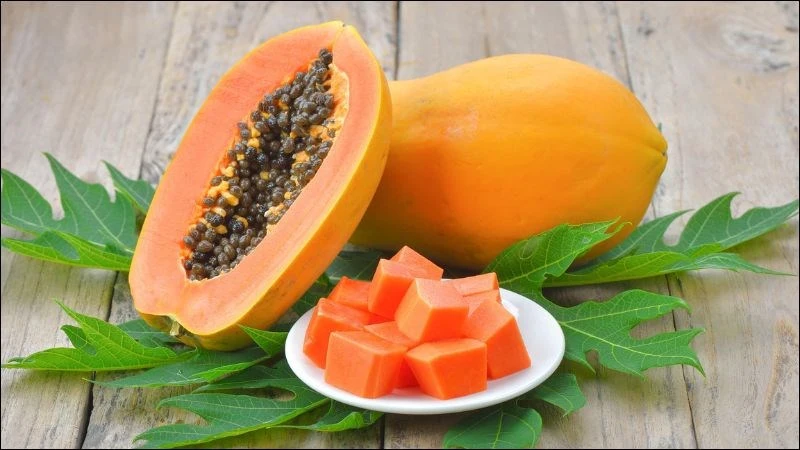
The middle of the fruit contains many small inedible seeds, so make sure to remove them before eating. Papaya also contains many health benefits, such as vitamins, calcium and fiber.
How to eat: Just peel the fruit with a knife and cut it into cubes or slices. It will taste better and stay fresh longer if you store it in the refrigerator.
Man (Java Apple)
Java apple is a unique Vietnamese fruit that looks like a bell. Its skin is smooth, shiny and bright red, and the inside is juicy and crunchy, like a watermelon.It is slightly sweet, slightly sour if not fully ripe and quite juicy. Plus, it is good for your digestive and immune systems because of its nutrients.

How to eat: Cut the bottom and eat around the core (avoid the seeds), or you can cut it in half, remove the core and enjoy.
Coc (Ambarell)
Ambarella is a very famous fruit in Vietnam and a staple in Vietnamese cuisine. It grows in clusters and is oval in shape.

When unripe, the skin is green and tough, with a fibrous seed inside. When ripe, it turns yellow. The flesh is crunchy and has a sweet and sour taste, but tends to be more sour.
How to eat: Peel, cut into pieces and remove the seeds. Locals eat it with chili salt or pickled with sugar and salt water for a sour snack.
Chanh leo (Passion Fruit)
Passion fruit is a small, round, purple fruit that is an important part of Vietnamese cuisine. Inside, the yellow flesh is juicy and filled with edible seeds. It has a sour taste with a hint of sweetness.

This Vietnamese fruit is used in ice cream, juices, cocktails, and cakes. It is also high in vitamin C, protein, and carbohydrates, making it a healthy and flavorful ingredient.
How to eat: Use a knife to cut it in half and scoop out the flesh with a spoon. You can use it to make fresh drinks with sugar or as an ingredient in dishes.
Bottom Line
Vietnamese fruits are an important part of daily life here. They are not only delicious desserts but also used in many dishes and play an important role in Vietnamese culinary culture.
Then this is your chance to try out Vietnam’s tropical fruits! You will definitely find some new favorites.
If you have any question, please do not hesitate to contact us.
